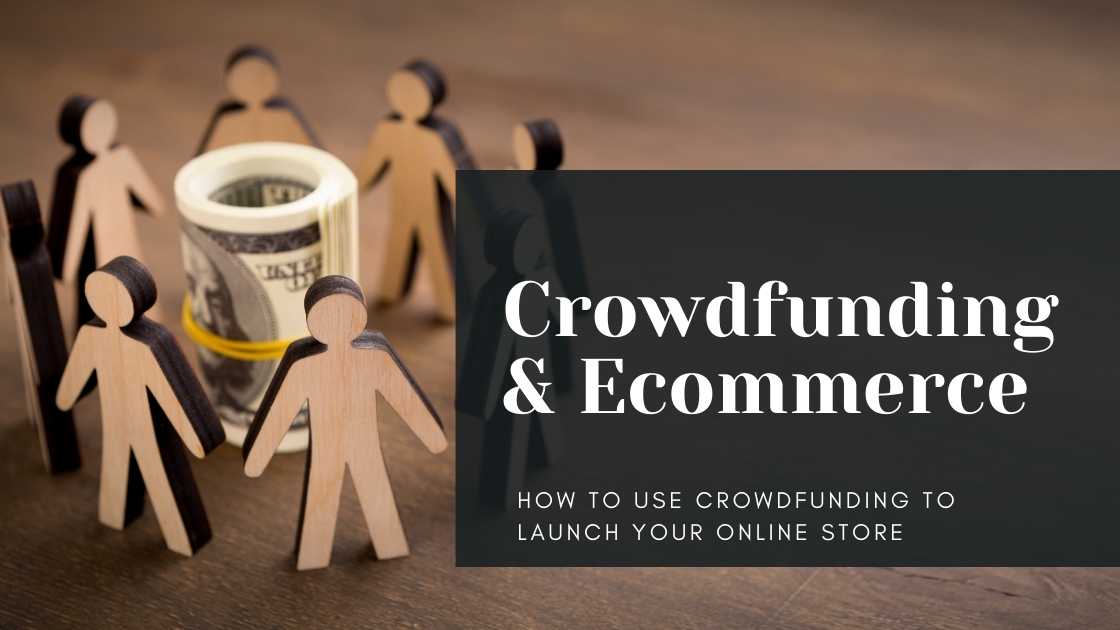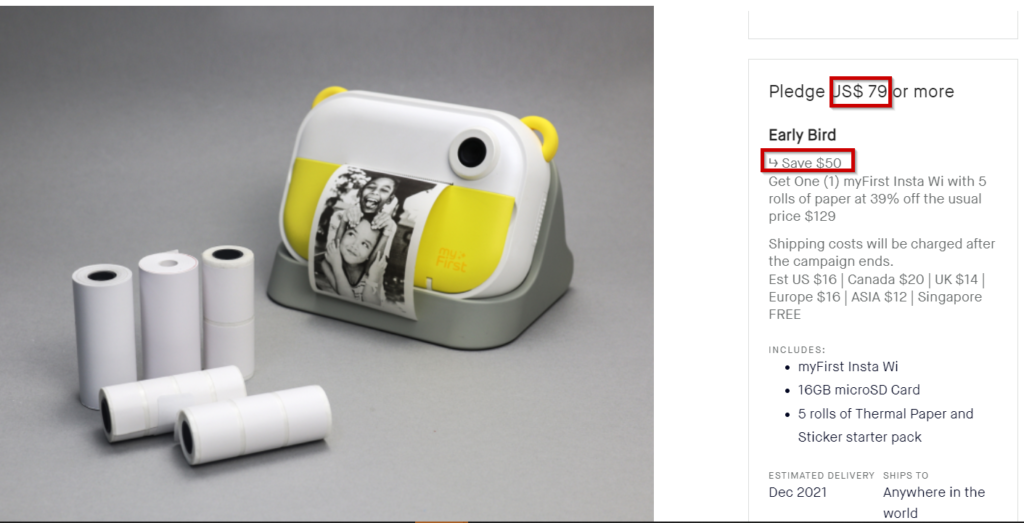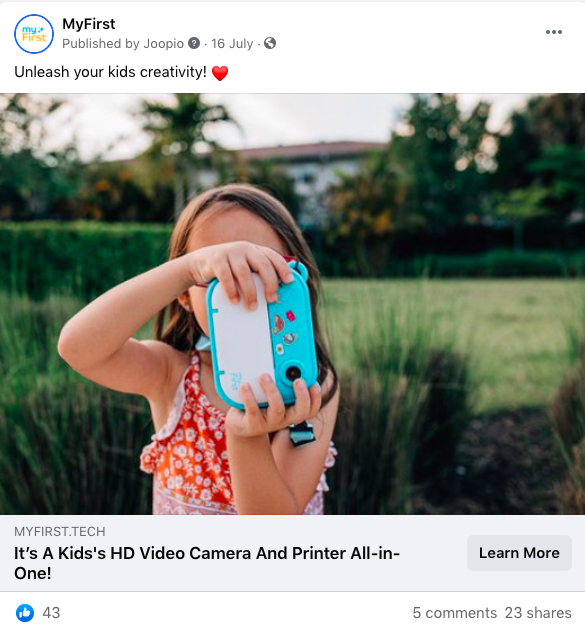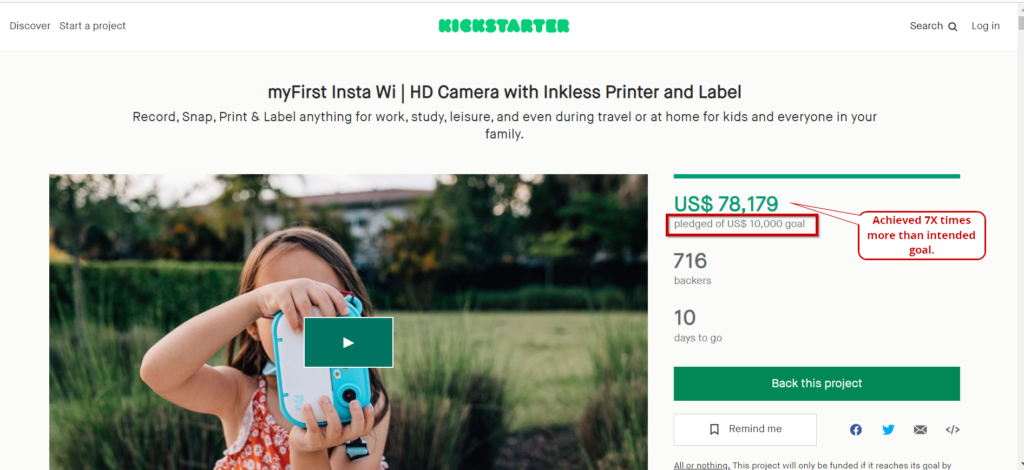
04 Oct How to Use Crowdfunding to Launch Your Online Store
You’ve always heard of crowdfunding for social causes or creative projects.
Did you know you can also use crowdfunding for business and launch your online store?
In fact, crowdfunding is expected to be the future of small business financing where the focus will be on community building.
So how does crowdfunding work in helping you launch an e-commerce store?
Here’s everything you need to know.
What is Crowdfunding?
Crowdfunding uses a platform like Kickstarter and Indiegogo to connect business owners or project creators to an online community who may be interested in investing, funding, or backing the project.
For a complete understanding of crowdfunding, download the Crowdfunding Launch Playbook.
What is Crowdfunding for Business?
Sometimes, project creators or innovators have just enough funds to create a product prototype. To sell the product to an audience, they would need funding.
Banks or VCs don’t often support product funding unless it has immense potential to disrupt the industry.
Most crowdfunding products are a novelty and hence do not have enough viability to attract the support of bank or VC loans.
This is where crowdfunding for business works its magic.
- Project creators launch their products on a crowdfunding platform.
- They set a funding goal that they need to bring the product to market.
- They set various pledge amounts that backers can “pledge” in return for an early bird price.
- The more people “back” the product, the faster it will reach funding goals.

Once the funding goal is reached, the product owner uses that amount to start manufacturing the product and delivers to backers on the estimated delivery date.
With the help of crowdfunding, the project owner has achieved three key benefits:
1. Received funding from a community to kickstart product development.
2. Now has a community of early adopters and buyers who are also creating hype & boosting the brand image.
3. Now has the chance to take this audience off Kickstarter and to the owner’s personal store.
In some cases, these business owners also launch brick and mortar stores which is then visited by their backers who are in the same city/country.
It’s a win-win deal!
Sounds Easy So Why Isn’t Everyone Using Crowdfunding to Launch E-commerce Stores?
Because without an audience or a community, you are selling to crickets.
And an audience won’t come if they don’t trust you.
With crowdfunding, you’re essentially asking people to pledge/invest in your product without:
- knowing you
- any social proof of your product
- any experience of your product.
So as easy as it sounds, using crowdfunding to launch your e-commerce store requires a strategic approach.
How to Launch E-commerce Store Using Crowdfunding?
While there’s a lot of work involved in launching an e-commerce store using crowdfunding, you can begin by taking these basic steps:
1. Conduct a Market Survey of Your Product:
Never begin a crowdfunding campaign without conducting a survey to understand audience expectations of your product.
One of the classic mistakes most product founders do is launch directly without adequate market surveys to understand whether the intended audience will even pay for the product.
If you’re selling something for, say, $300 – $500, on a crowdfunding platform, you need to be sure it’s something people would line up to buy!
2. Conduct an In-Depth Research for Similar Products on Crowdfunding Platforms
Always make it a point to conduct in-depth research for other similar products on Kickstarter and Indiegogo.
You can go on to the crowdfunding platform, type in the keyword (for e.g fitness smartwatch) and assess the results.
Go through each and list down key points in a spreadsheet as shown here:

This data is important for you to assess so you can position your price point, messaging, and USPs.
3. Build a Landing Page to Showcase Your Product
If you’re new and just starting out, build a landing page to talk about your project.
Don’t lead your crowdfunding audience to an online store yet.
The way it works is the landing page becomes a squeeze page where your audience can sign in so they can become part of your email funnel.
This way you can reach them directly with product updates and launch details.
Here’s an example of a landing page.

4. Start Driving Traffic to the Landing Page Using Free & Paid Mediums
Now that you’ve got the landing page ready, start driving traffic to the page using a combination of free and paid mediums.
Free channels include email marketing, content marketing, social media, word-of-mouth marketing, groups.
Paid channels include Facebook ads, Twitter ads, retargeting ads.
With all this, you direct traffic to your landing page where they can sign up to the deal.

5. Get Ready to Launch When You Have At least Over 200 Sign-ups
For crowdfunding to kickstart, you need to have at least, over 200 sign-ups.
But make sure you calculate this estimation based on your funding goal.
So, if your funding goal is $10,000 and you expect each person to pay at least $79, then 200 ready backers mean you’ll be looking at around $15,800.

That’s just an initial figure to start with.
During your campaign, you’ll be sending out multiple emails, invest more in retargeting and Facebook ads to direct people to the page.
A crowdfunding campaign is live for 30 days only. You have to make sure you meet or exceed your funding goals.
In case you don’t meet your goals, you won’t be able to obtain any amount from Kickstarter because the platform operates on an All-or-Nothing model. This means if you don’t meet your funding goal, you won’t be able to withdraw any money raised.
6. Moving to E-commerce After a Successful Launch
If your product is a hit and you’ve over exceeded your goals by making a 6 or 7-figure raise, you can now invest that money into building an e-commerce store (of course after making sure it’s spent on manufacturing and ensuring delivery on time).
At this point, you’re scaling.
If you’re still unprepared for an e-commerce store, you can raise additional funds using Indiegogo In-Demand, a platform by Indiegogo that allows successful Indiegogo and Kickstarter campaigns to continue raising funds.
You May Also Like to Read:
5 Essential benefits of crowdfunding: what exactly makes it cool?
How To Achieve Success With A Crowdfunding Campaign? Digital Marketing
Although crowdfunding is supposed to help you with funds for the project, you’ll still need to have some money for marketing and spending on creative assets.
And if you want the help of an agency, you’ll need to have at least $7,000+ set aside.
To Conclude
If you’ve got an amazing product idea but limited funds to get started, you might want to consider crowdfunding. If that proves a success, you can invest the money raised into building your online e-commerce store!




No Comments